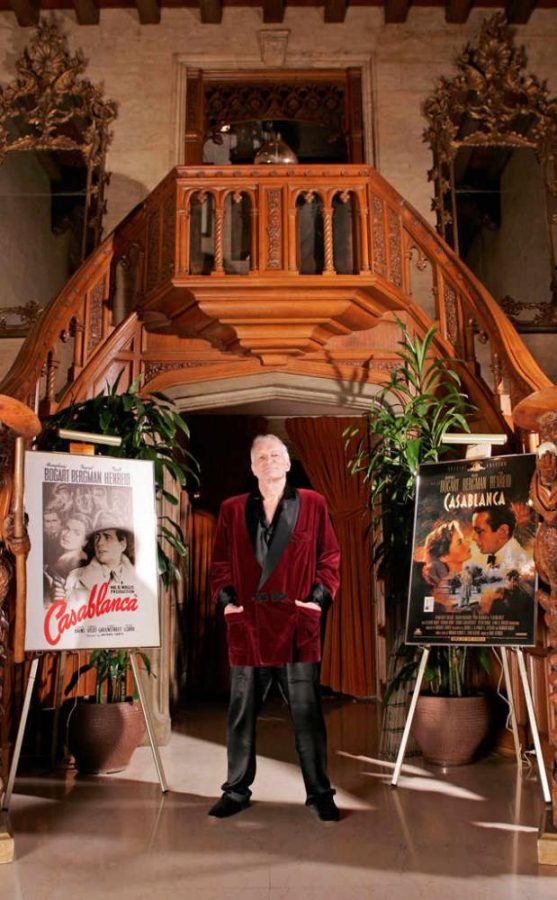Editorial: Legend or Villain?
By Kevork Djansezian (AP Photo)
Sept. 27, the news that 91-year-old, Hugh Hefner had passed away made headlines.
October 11, 2017
Wednesday, Sept. 27, Hugh Hefner died a symbol of the sexual revolution. But was his life a legacy to be celebrated? The first Playboy magazine, released in 1953, featured nudes of Marilyn Monroe during a time when sex was not a topic to be discussed. In this way, Hefner accomplished a feat. As he noted in a 1993 New York Times interview, he “changed attitudes toward sex… [and] decontaminated the notion of premarital sex.”
Hefner did open the conversation about sex but his life is not one to be celebrated. Hefner represented exploitation of women for gain and mainstream pornography. His business fed rape culture and addiction.
Hefner’s Playboy magazine made porn mainstream. In fact, Playboy ceased publishing nudes between 2015 and 2017 because nudity was so readily available on the internet and other platforms. This availability has led to an industry full of controversy and harmful addictions for many.
Pornography is addictive – Norman Doidge states in his book The Brain that Changes Itself that dopamine released while viewing pornographic images reinforces maps in the brain that drives the viewer back to more extreme versions of those images. Studies by researchers have found that 60 percent of subjects had difficulty achieving an erection or arousal with a real partner but not with pornography. Hefner’s mainstreaming of this material did nothing for the real sex lives of viewers. Instead, it created addictive behaviors and difficulty in real sexual situations.
His business also fed the rape culture. In 2016, a former bunny, Chloe Goins, sued Hefner and his good friend, Bill Cosby for an alleged rape in 2008. He degraded women’s bodies and used them as sexual objects instead of treating them as people. Journalist, Gloria Steinem had a brief employment with Playboy which she turned into an article for Show Magazine. She wrote about underpaid, overworked and undereducated women that worked for Hefner. She described the clubs and magazines as “pornographic” rather than regarding it as erotic as Hefner would prefer.
So why are we celebrating the life of a man that perpetuated and celebrated the exploitation of women and addiction? Ross Douthat’s sentiments in his New York Times article are true “That this should be the case, that only prudish Christians and spoilsport feminists are willing to say that the man was obviously wicked and destructive, is itself a reminder that the rot Hugh Hefner spread goes very, very deep.”
We need to consider the way that this poison has impacted us and consider how we can start real change. The first step is to recognize Hugh Hefner as a villain instead of a legend.

